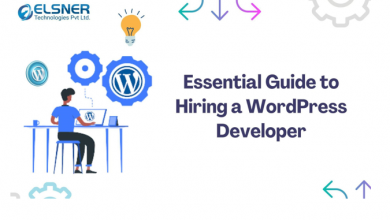
This guide is going to help you build a winning SEO strategy. If you’ve been trying to figure out what works and what doesn’t, or if you’re just looking for tips on how to improve your performance in search engines, this guide will help!
- Focus on on-page SEO
- Get backlinks from authority sites
- Use keywords correctly and strategically
- Deliver great content (and if possible, video)
- Write more articles than your competitors do; make sure they’re shareable too!
- Take advantage of native advertising opportunities on social media channels like Facebook, Twitter, and Instagram. These are often overlooked by many businesses but can be very effective at driving qualified traffic back to your website.
Create a plan to win.
Before you start setting strategies, it’s important to have a clear understanding of your goals.
Define the problem before starting on a solution. The best way to develop an SEO strategy is by defining the problem first. This will help you determine what kind of results are needed and how much time, money, and effort should go into achieving those results.
If you have an in-house sea team then you can sit down with them and create an SEO blueprint, alternatively, if you decide to onboard an SEO company, make sure they have a good reputation and a solid team powering up their agency.
For example: if your website was being ranked in Google because it had great content but not enough links pointing back at it (or vice versa), then this would be considered a “link building” issue rather than an “SEO” issue—so instead of focusing on improving link quality, focus on building links from other places around the web or get in touch with SEO link building services provider until they reach high enough ranks for Googlebot crawl them!
Success Begins with Great UI and UX.
One of the most fundamental or as I would say the most crucial part of your success relies on a great user interface and a powerful backend.
For instance, if you have decided to start an e-commerce website on a woo-commerce platform, you will need an experienced team with a vision and a lot of expertise in design and development. You will also need several plugins for your WooCommerce website to help you with the performance of your portal.
If the team is experienced, they will have certain SOPs and internal quality control checks to follow, that will ensure your website is on the spot. Having an experienced e-commerce web development team can ensure your website is built with both end users and SEO in mind.
Take charge of your on-site SEO.
On-site SEO is the most important factor in SEO and should be your top priority. You can’t compete with a competitor who has on-site SEO, so you need to take the lead by investing in it yourself!
If you are running an e-commerce store like Shopify, on-site optimization is the best way for you to improve your site’s rankings, user experience, and conversion rates. By doing this correctly (and consistently), you’ll increase traffic to your Shopify store from search engines like Google and Bing—and that means more customers coming through your door!
Improve your content.
The first thing you should do is improve your content. If you want to take a chance on SEO, make sure that it’s high-quality and relevant to the audience you want to target. Your site or blog should be useful and useful enough that people will come back again and again (or at least browse through it once).
If there’s already an existing audience for your business or product, then spend some time thinking about how they can benefit from new information that would help them with their needs, wants, and desires in life.
Use the right tools.
Achieve SEO success by utilizing the right tools, such as an SEO extension. Enhance keyword research, track rankings, and optimize content effectively to boost your website’s visibility and performance.
When it comes to the tools, you will need a bunch of them to measure performance against competitors and the KPIs that you have set for your website. Some of the important tools that you will need include
- Ahrefs: for checking on competitors’ backlinks and finding link opportunities for your website.
- Semrush: for keyword research. Find the high-volume and low-competition keywords.
- Grammarly: The best tool to proofread articles. It comes in both free and paid versions. It helps keep your web copy error-free.
- Screaming Frog: It is an amazing tool to crawl the website and find potential on-page issues. It is probably one of the oldest yet most useful tools for on-page optimization.
- Independent Analytics: It is a state-of-the-art free WordPress plugin that helps you check bounce rate, traffic, and user behavior and is power-packed with several features. Independent Analytics is a Google Analytics alternative that won’t slow down your website and comes with the ability to build a custom dashboard so that you can digest information rather quickly.
See Also: 30+ YouTube SEO Tools to Boost Your Video Rankings in 2024
Establish a strong social media presence.
Social media is a crucial part of any SEO strategy, and it’s also one of the easiest ways to get your brand out there. If you have a strong social presence, people will be more likely to find you online when they’re looking for something related to what you do.
For example: Say someone is interested in buying a new car but hasn’t found an article about buying cars yet. They could search for “cars” on Facebook or Google and stumble upon one of your posts from last week that talks about how much money someone spent on their new wheels (which would be seen by all their friends).
Then maybe another user shares that post with her friends who might also be interested in finding out more information about cars—and boom! You’ve now got links pointing back towards your website from both sides!
Pay attention to blogs and forums.
Blogs and forums are a great way to build connections with other people in your industry, as well as get advice on how to improve your SEO. You can find both forums and blogs by searching for “SEO” or “Search Engine Optimization.”
When looking at blogs, make sure that they have a high traffic ranking on Google; this will show you that there are thousands of people visiting their site every month who are interested in their topic.
If the blog has high search engine rankings but doesn’t have many readership stats (i.e., no social media accounts), it’s probably best left alone unless you’re already familiar with its owner/writer personally who might be willing to help out with some suggestions on improving the quality of their content so that it ranks higher than another similar website owned by someone else!
Keep up with the competition.
The best way to keep up with the competition is by finding out what they are doing and then checking out their websites. If you have a website, try to find their sites so that you can see what they are doing right and wrong.
This will show you where your strengths and weaknesses are, which in turn can help guide your SEO strategy as well as give insight into what kind of content resonates best for search engines such as Google.
Your SEO is only as good as your strategy.
Your SEO is only as good as your strategy.
SEO is about more than just keywords and links, so let’s start with that.
Conclusion.
Congratulations! You’ve just learned how to optimize your site for search engines. Now all you need is a strategy that will help you win the competition. We hope these tips have helped you get started with your SEO plan. If there’s anything else we can provide, please contact us!







